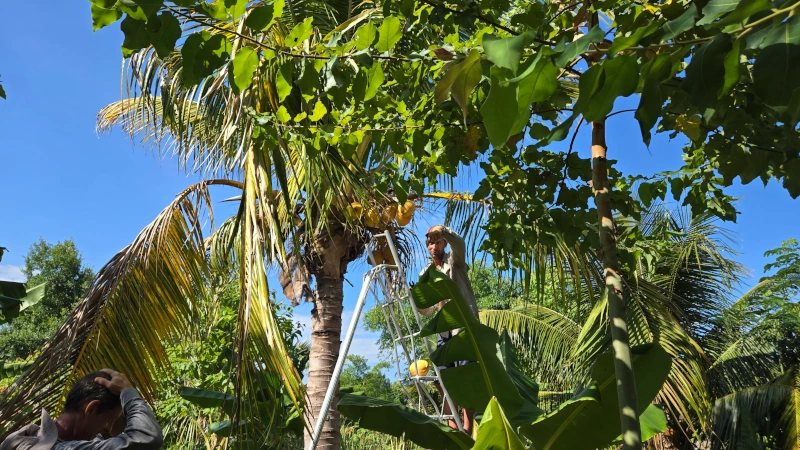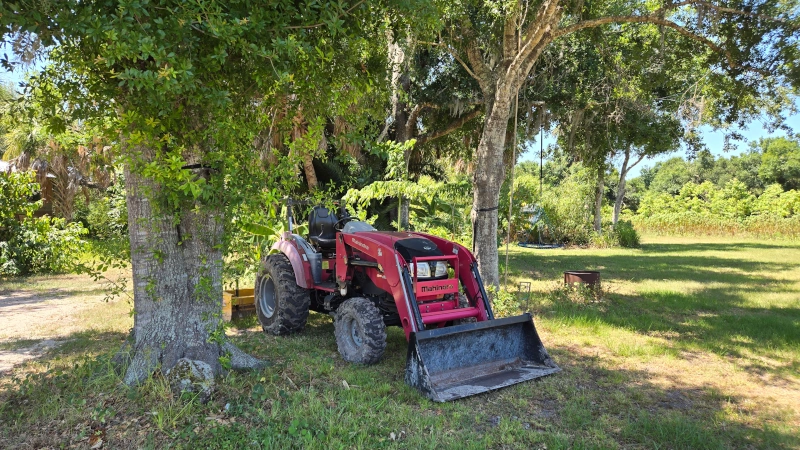Donna Sanders is the script supervisor, field producer and food editor for Where The Food Comes From.
This is her Behind-The-Scenes look at our day filming with Peace River Organics in Punta Gorda, Florida.
Ah, South Florida in the spring. Beautiful blue skies, greenery as far as the eye can see, fruit hanging from trees, temperatures in the high 80s to low 90s, humidity levels ranging between 70% to 84%, and the sounds of many many bugs making well — their bug noises. Paradise to some, maybe a tropical nightmare for others and that may depend entirely on the weather.
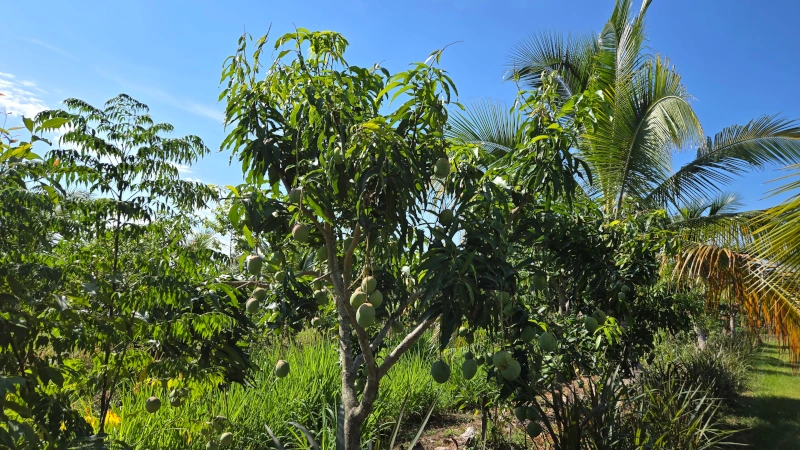
Where The Food Comes From visited Peace River Organics in Punta Gorda, FL in May. It was midmorning, but the temperature was already up into the high 90s, with humidity that took your breath away and no chance of rain. Doesn’t sound like a good day to film – except for the no rain part – an episode. But that is exactly what we did.
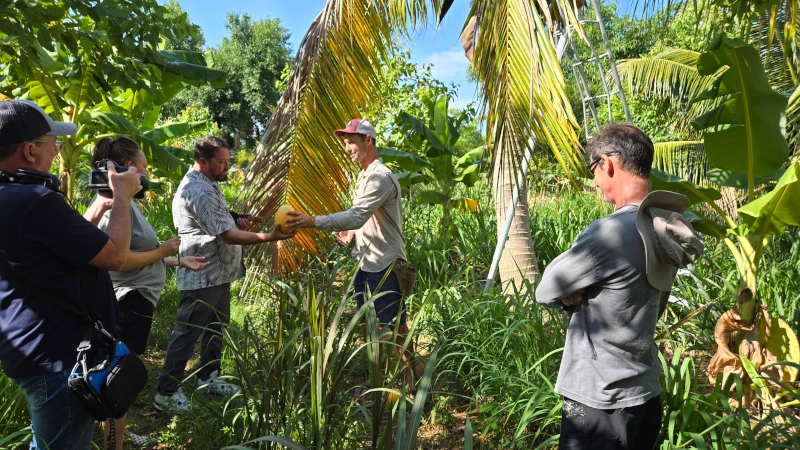
Peace River Organics is doing things a little differently than other farms we have seen. They are attempting to farm without infrastructure, power, and water. And to make it even more interesting they are doing it without nitrogen fertilizers, fungicides, and pesticides. How does that even seem possible? We are in luck; owner of Peace River Organics Matthew Reece will not only tell us how but show us the results along the way.
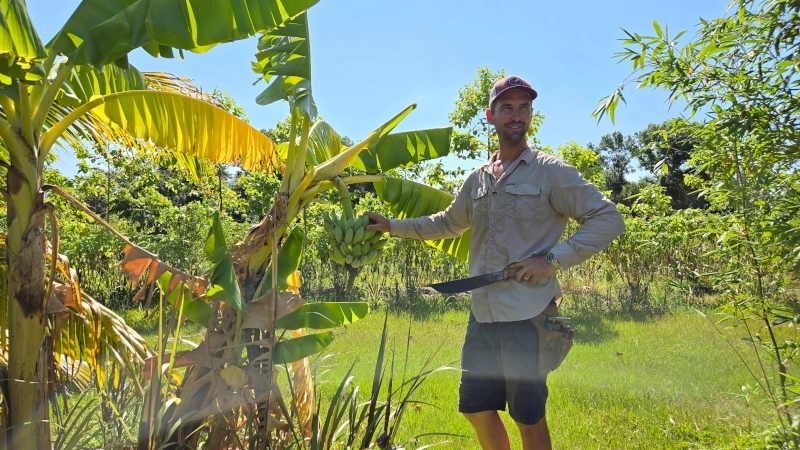
Matthew Reece
Let’s meet Matt. Matt’s background is civil engineering and he fell in love with the tropical environment while working on assignment. All well and fine, but how did he become a farmer? Like most things it started out as a hobby, but when Matt made the commitment to change his diet to an all plant-based one a farm was born. Not just a farm, but one specific to the heat and humidity of South Florida.
Tour Time
Matt is very enthusiastic about sharing information and gives tours of his farm to educate people interested in learning about tropical farming. And when we arrived, there was a crowd gathered on the front lawn eager to learn some tips.
Host and Producer of Where The Food Comes From Chip Carter decided to let Matt do his thing and we just followed the rest of the group. We did learn some very interesting things and I will do my best to tell you the highlights. Matt was moving pretty quick – remember it was already hot – and I was so busy looking around and taking pictures that I may have missed a few details, but as always you will see it in the episode.
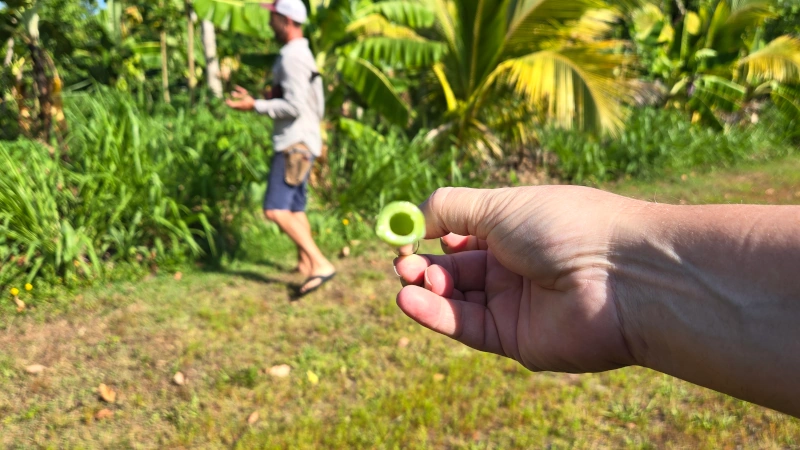
Up first the papaya plant. This was kind of cool. As it turns out the leaf’s stems are hollow and can be used as a straw. Many of us tasted the papaya juice from straws Matt made right on the spot (they’re also handy to pop in a fresh coconut to drink the milk — talk about an all-natural drink!). I wanted to bring some home for the three younger grandchildren, but Matt said they would not last that long.
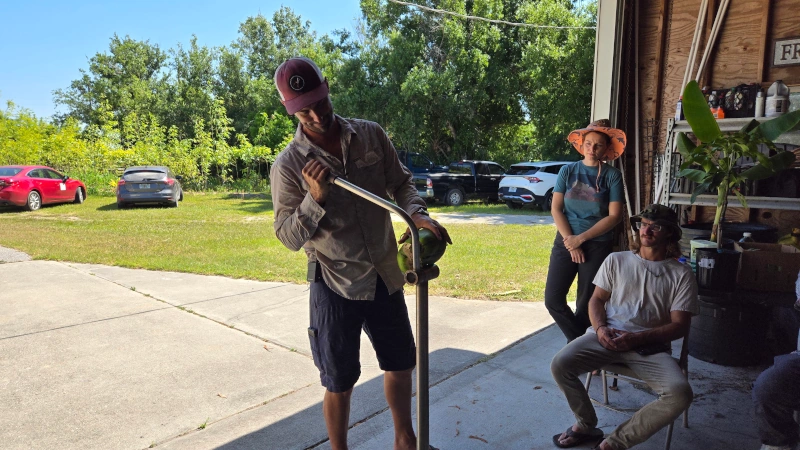
Matthew Reece
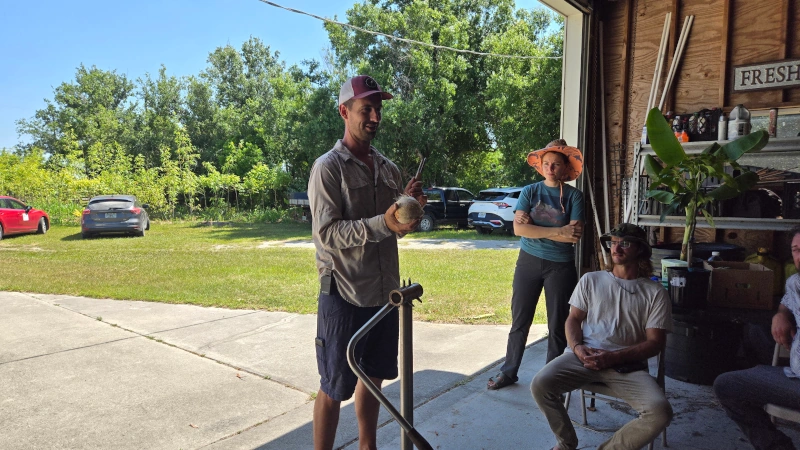
Matthew Reece
We walked past mangos, pineapples, and coconut trees. Fun fact: To tell if your coconut has milk give it a good shake. If you hear water sloshing around you nailed it. To produce milk, the coconut will have had to mature for six or seven months and will be the color green. But as the coconut continues to mature the outside will turn brown and there will be no liquid sloshing around. And it is at this point you get to crack it open and eat the delicious meat. Cracking the coconut was no easy task. Per Matt, “You have to have the right tools for the right job.” Oh, believe me he has the right tools and some of them are pretty scary looking.
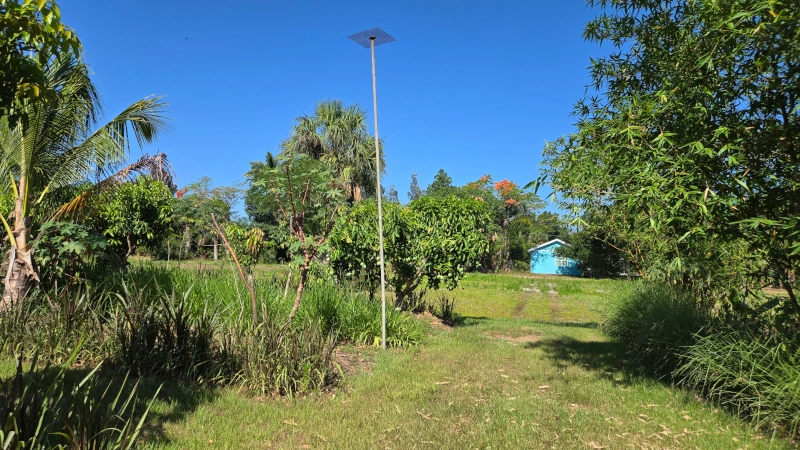
As our tour continued someone asked about the pole in the above picture. It turns out the pole attracts predator birds – like hawks. Wow, predatory birds are something that most farmers don’t want – remember the poor chicken who was attacked by a hawk in Season 5, Episode 04 Baseball, News And Chickens? That poor chicken had to be stitched up and rehabilitated!
You may be wondering why are these birds being encouraged to roost? The predator birds take care of any rats, squirrels, or other small rodents which may damage the crops. Not fun to think about or picture but it is practical.
Welcome To The Cave
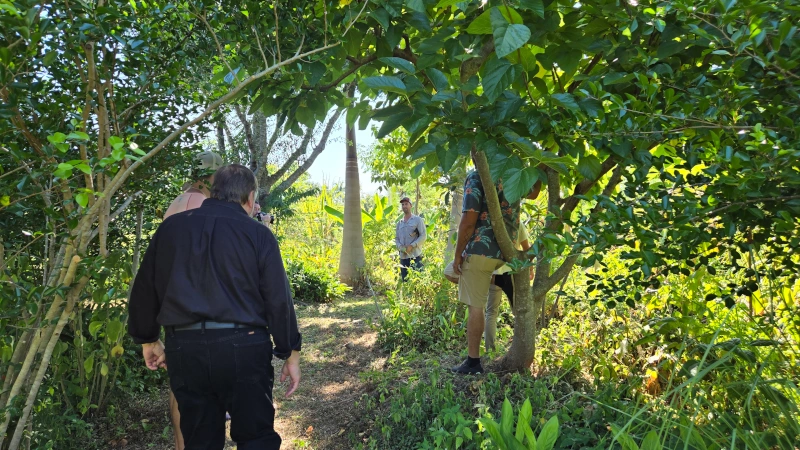
Matt referred to the above picture as the cave. It was a bit cooler in this little alcove and he took advantage of this to tell us about how farming without water, pesticides, or fertilizers works.
It is basically a layering system and it’s the way food has been grown in the tropics for eons. Picture three different-sized plants being planted close together. You have a taller tree — like a coconut palm — with a large top, also called a canopy, that can capture the water or early morning dew. The precipitation then trickles down to a medium sized plant, and finally to the one lowest to the ground. And the multiple variety of grasses Matt grows helps hold in the moisture. This method also gives the smaller and more fragile plants a break from the hot blaring Florida sun. It all makes total sense when you put it together in your mind’s eye.
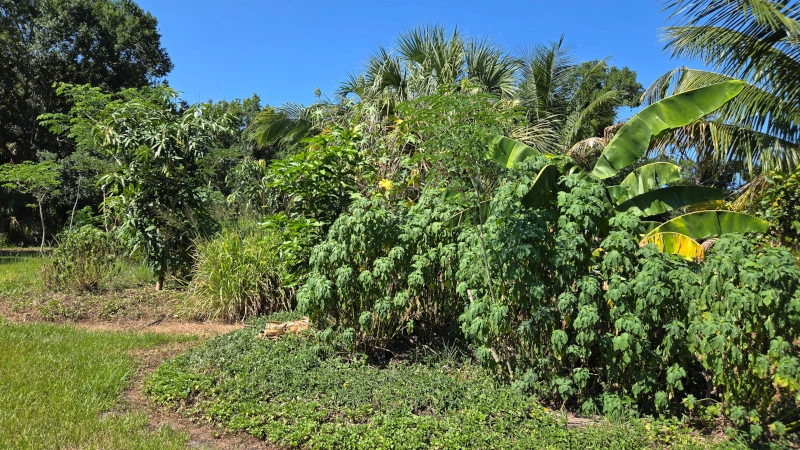
Natural fertilization and pest control takes place by something called companion planting. For just about every fruit or vegetable grown there is another plant that will complement it — like the “Three Sisters” approach Native Americans taught colonists, planting corn, squash and beans in the same mound. The companion plants helps increase soil nutrients and decrease pests. For the sake of simplicity let’s use the pepper plant as an example. Peppers will thrive when grown with basil, onions, spinach, and tomatoes. I do know for sure this works because I have tried it.
Off To The Shed
Folks it was getting even hotter and I was very grateful when Matt decided it was time to get out of the oppressive heat and head to the shed. I do need to add the shed was not airconditioned but the fans definitely helped.
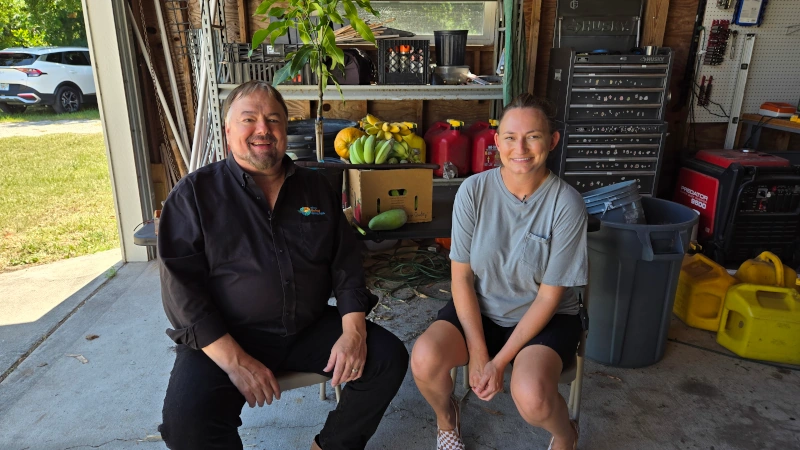
Chip Carter and Emily Goulet
The cameras rolled and Chip started talking to Matt — but a perky young lady, Emily Goulet, felt she needed to share her thoughts, too. It turns out Emily has a homestead farm and grows okra and tomatoes in traditional raised beds. But she wants to learn about growing topical plants so she can farm year-round in South Florida. Per Emily, “We want to do it right from the start.” And she has full faith that Matt will help her along this journey.
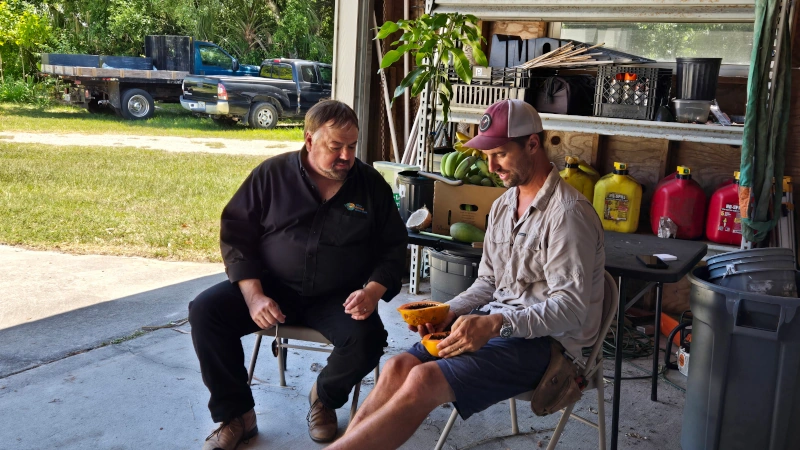
Chip Carter and Matthew Reece
Back on track, Matt told Chip more about the bamboo trees, mangos, bananas, and the pineapples he grows. And we all got to sample the coconuts, bananas, and papayas from his farm. The bananas, a smaller variety, not grocery store Cavendish, are delicious – huge compliment since I am not a fan overall.
But, in my opinion, papayas appear to be Matts favorite. He told us, “The papaya seed is nature’s caviar.” Fun fact: The papaya seed can be used as an antiparasitic for your pets. Who knew!
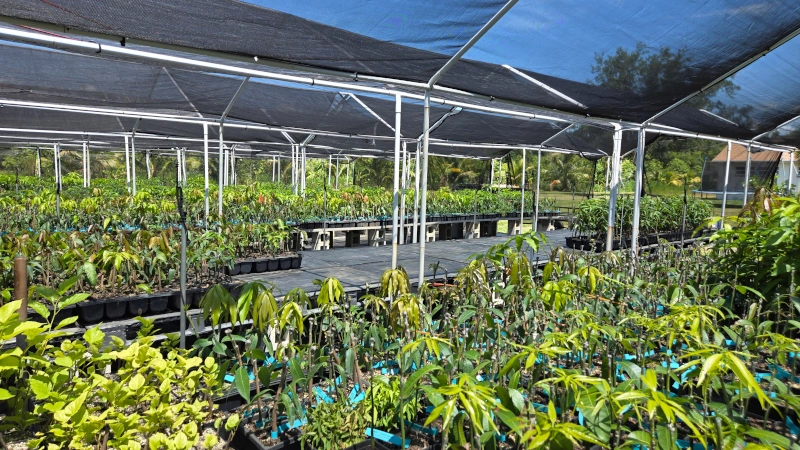
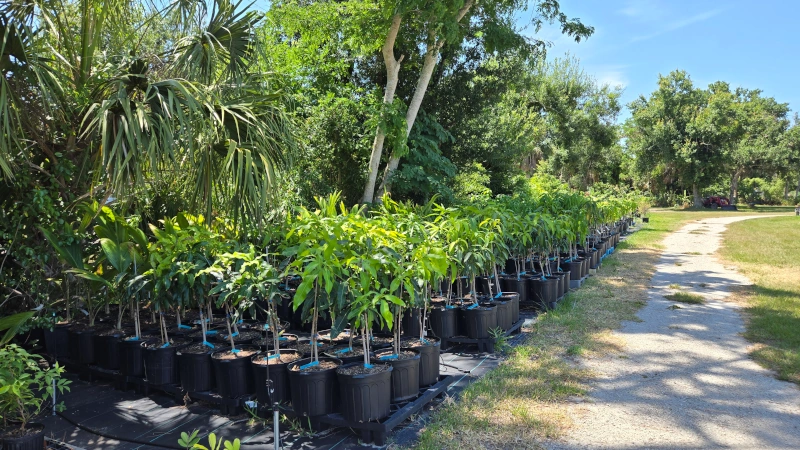
Matt’s passion is tropical trees. Currently he has 60 varieties of mangos and five varieties of coconuts. And people like Emily come from all around South Florida to purchase Matt’s plants and to learn about farming.
And I’ll wrap it up with something just for grins and giggles: I haven’t had one in a while but here is my latest “Where’s Waldo?” photo. Except this time, it’s “Where’s Matt?” Can you spot him?
